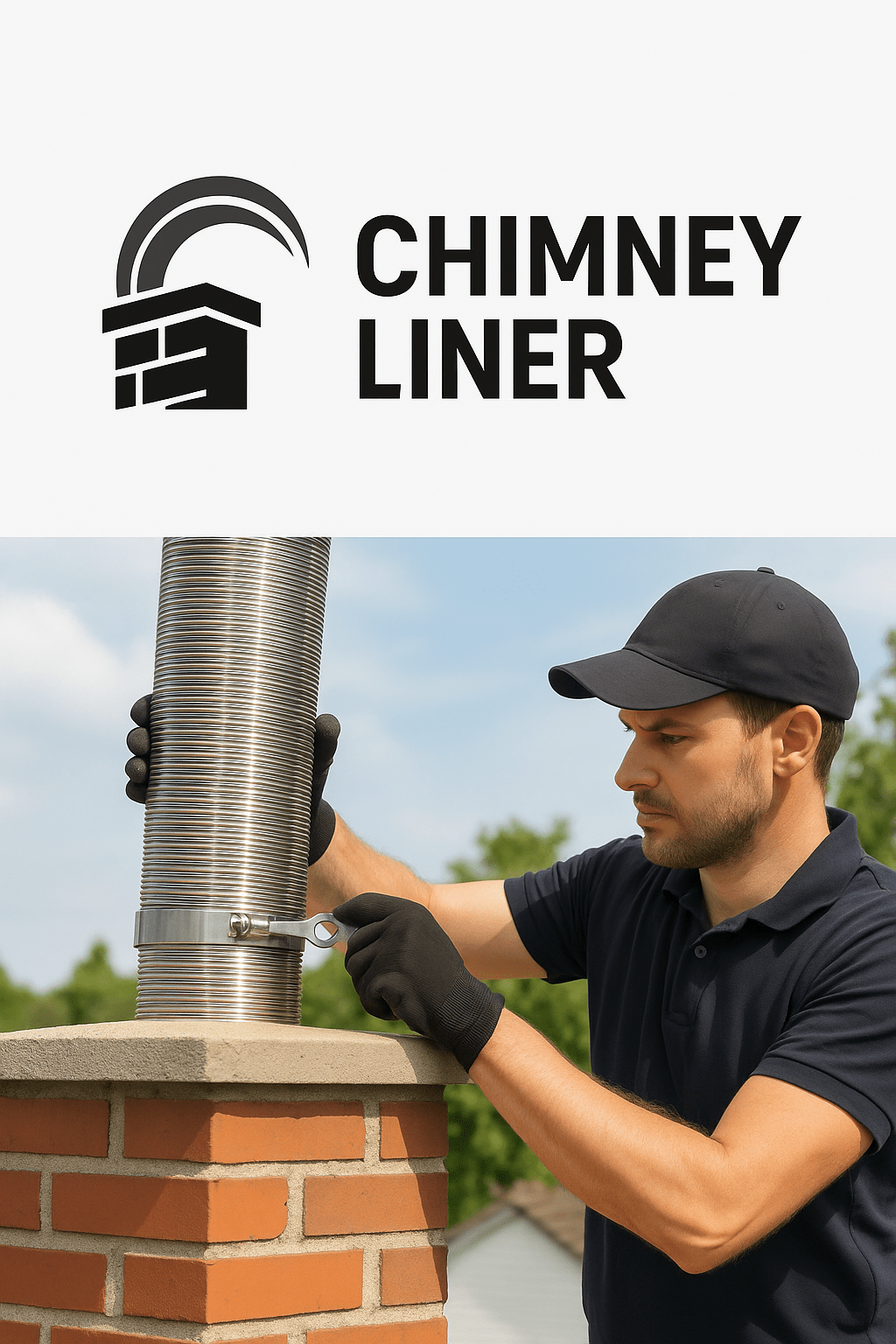A very significant aspect of having a safe and functional fireplace system is installing a chimney liner. However, it’s also where homeowners and even some contractors tend to make costly mistakes. Being aware of these pitfalls is key to keeping your chimney system at its lifespan, safety, and efficiency. Whether retrofitting a liner into an older flue or upgrading for efficiency, it is important to perform it with precision and compliance with building codes. Proper installation is especially important when designing for service providers for Chimney Liner Charlotte.
Why It Matters
A chimney liner serves as a protective shield that insulates the chimney walls from heat, combustion gases, and moisture produced during combustion. It plays a significant role in making the structural integrity of the chimney stronger, enhancing the draft efficiency, and ensuring that dangerous gases like carbon monoxide cannot enter your house. Inefficient installation of the liner can cause the appliances not to operate efficiently, increase fire risks, and cause a lot of damage that could result in major repairs or even complete chimney replacement. The liner must be the same dimension as the appliance it will attach to so it can maintain proper ventilation and prevent creosote buildup, a main cause of chimney fires.
Common Problems
Mistakes during chimney liner installation are more common than most homeowners realize. Among the most common are selecting the wrong liner size. A liner that is incorrectly sized too large or too small can cause draft problems and lead to smoke leakage into the home. Not cleaning the flue before install is another frequent mistake. Any creosote residue or blockages will interfere with proper liner installation and present serious fire hazards. Low-grade or non-certified materials are also a serious concern, typically leading to early failure and reduced protection. Inadequate liner insulation, especially in older stacks, can lead to inadequate thermal performance and condensation problems that produce long-term structural problems.
Key Benefits
Installed correctly, a chimney liner offers many benefits. It maximizes combustion efficiency by creating a smoother path for gas flow out of the home. This reduces creosote build-up, prevents chimney fire, and improves the efficiency of wood stoves, fireplaces, and gas appliances. A properly insulated liner also prevents condensation, which would erode masonry and mortar over time. Additionally, modern stainless steel liners are durable, rust-resistant, and are typically warranted for 10 to 20 years or more. All of these factors work together to enhance safe operation, maximize chimney life, and minimize long-term maintenance costs.
The Role of Firebox Repair
Yet another aspect that is most commonly overlooked while installing a chimney liner is the condition of the firebox the burning chamber. A rotten firebox would lead to gaps, cracks, and heat loss, which can impact the efficiency of even a perfect liner installation. The correct Firebox Repair needs to be undertaken before the liner installation process. Structural imperfections in any firebox need to be rectified to ensure that the liner performs its best. This consists of repointing spalling joint mortar, renewal of firebricks, and ensuring the smoke chamber flows freely into the flue. If these repairs are not done, it will result in heat leakage and degradation of the chimney system.
Cost Breakdown
The expense of putting in a chimney liner varies with the liner type, chimney height, and state of the original system. The cost breakdown below is approximate:
| Component | Estimated Cost (USD) |
| Stainless Steel Liner (Materials) | $400 – $1,200 |
| Installation Labor | $800 – $1,500 |
| Insulation (Optional) | $200 – $500 |
| Firebox Repair (If Needed) | $300 – $900 |
| Total Estimate | $1,700 – $4,100 |
Disclaimer: Prices may vary by location, chimney height, complexity, and contractor fees. Always request a written estimate from a certified contractor.
FAQs
Q: Can I install a chimney liner myself?
A: Technically, yes, but not advised if not professionally trained. Improper installation can be a violation of building codes and lead to severe fire hazards.
Q: How long will a stainless steel chimney liner last?
A: Most stainless steel liners have an average life expectancy of 15 to 25 years based on usage, service, and exposure to corrosive substances.
Q: Is a code required for a chimney liner?
A: Yes, in general. The International Residential Code (IRC) demands chimney liners for safety and efficiency in appliance venting.
Q: Must I use insulation to wrap my chimney liner?
A: Insulation improves heat performance and prevents condensation. It is highly recommended for exterior chimneys and required in most locales.
Principal Characteristics
Safety Conformance: New liners meet national fire safety standards, reducing the risk of fire and ensuring sound exhaust.
Material Options: Constructed of stainless steel, aluminum, and clay tile, the strongest being stainless steel.
Individualized Size: Liners are designed to fit various appliance designs and chimney sizes for optimal draft.
Resistance to Corrosion: High-quality liners resist water and acids, preventing premature failure.
Warranty Protection: Quality liners generally include long-term warranties, giving homeowners extra peace of mind.
Conclusion
Forgetting or neglecting to avoid typical chimney liner installation pitfalls is not merely a matter of expense it’s a matter of family and home safety. Issues with improper sizing, poor material choice, or neglecting to perform required firebox repairs can compromise safety and lead to expensive repair jobs. Investing in quality service and adherence to national building codes is the ideal way to ensure the system is safe and effective. As a certified chimney professional would explain, “A chimney liner is not just an accessory it’s a protector from fire, poison, and ultimate structural collapse.” In selecting for Chimney Liner Charlotte, rely on certified pros who understand the importance of proper installation from firebox to flue.
Read More:Chimney Sweep Charlotte
